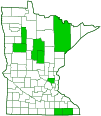Taschenberg’s long-necked ant
(Dolichoderus taschenbergi)
Conservation • Description • Habitat • Ecology • Distribution • Taxonomy
|
|
|||||||||||||
Description |
Taschenberg’s long-necked ant is a small to medium-sized odorous ant. It occurs in the United States from Maine to North Dakota, south to Georgia and Louisiana, and in Canada from Nova Scotia to Manitoba. It is uncommon throughout its range but is most abundant in the north. It is found in open areas including old fields, woodland edges, and bogs. It forms huge colonies, often with multiple queens and more than 10,000 workers. It constructs igloo-shaped dome nests, 2″ to 8″ in height, using grasses, sphagnum mosses, spruce and pine needles, and other shredded vegetation. It the spring it can sometimes be found massed aboveground warming in the sun. The type species of the genus is Dolichoderus attelaboides and is found in the Amazon. The rear portion of the head narrows, giving the appearance of a long neck. North American species do not have this feature. The Taschenberg’s long-necked ant worker is 1⁄16″ to 3 ⁄16″ (1.75 to 5 mm) long and uniformly colored. The overall color is sometimes interpreted as “dark brownish-black”, sometimes as “all black”, sometimes as “jet black”. The head is dark brownish-black and dull, not reflective. It is sparsely covered with short hairs and usually has a few erect hairs. There are two large compound eyes on the sides of the head and three simple eyes (ocelli) in a triangle on the top of the head. The antennae are light brown, have 12 segments, and are not clubbed at the end. The basal segment (scape) is very long. It is covered with short appressed hairs but has no long erect hairs. The remaining segments, collectively called the funiculus, joins the scape at a sharp angle, giving the antennae a sharply elbowed look. The jaws (mandibles) are light brown. The front part of the body (mesosoma) is covered with three exoskeletal plates, each forming a distinct bump. The first plate (pronotum) and second plate (mesonotum) cover the thorax. Together they are referred to as the promesonotum. They are covered with sparse short hairs but have no long erect hairs. They are dull, not reflective. The third plate (propodeum) covers the first segment of the abdomen which is fused to the thorax. When viewed from above, the propodeum is squarish, about as long as wide. When viewed from the side, the propodeum is distinctly concave and has the appearance of a bottle opener. This is an easily seen distinguishing feature of the genus. There is sometimes a single erect hair, rarely 2 or 3 hairs, at the back of the propodeum. The petiole is dark brownish-black and has a single raised bump (node). The rear part of the body (gaster) is bulbous and very dark brown, sometimes interpreted as black. It is highly reflective and usually completely hairless, but occasionally it has 1 or 2 erect hairs on the first segment. At the end of the gaster there is a horizontal slit. The legs are dark brownish-black. |
Size |
Total length: 1⁄16″ to 3 ⁄16″ (1.75 to 5 mm) |
Similar Species |
Habitat |
|
Ecology |
Season |
|
Behavior |
Workers are aggressive and will bite if their mound is disturbed. |
Life Cycle |
|
Larva Food |
|
Adult Food |
Mostly honeydew of aphids, scale insects, and tree hoppers, but they also prey on various insects. |
Distribution |
||
|
Sources |
|
| 8/10/2024 | ||
Occurrence |
||
Widely distributed but uncommon |
||
Taxonomy |
|
Order |
Hymenoptera (Ants, Bees, Wasps, and Sawflies) |
Suborder |
Apocrita (Narrow-waisted Wasps, Ants, and Bees) |
Infraorder |
Aculeata (Ants, Bees, and Stinging Wasps) |
Superfamily |
Formicoidea (ants) |
Family |
Formicidae (ants) |
Subfamily |
Dolichoderinae (odorous ants) |
Tribe |
Dolichoderini |
Genus |
Dolichoderus |
Subordinate Taxa |
|
|
|
Synonyms |
|
Hypoclinea taschenbergi |
|
Common Names |
|
Taschenberg’s long-necked ant Taschenberg’s odorous ant |
|
Glossary
Gaster
The bulbous part of the abdomen of ants, bees, and wasps. In ants it usually begins at segment three.
Mesosoma
In Hymenoptera: the front part of the body, consisting of all three segments of the thorax and the first segment of the abdomen, to which the wings are attached.
Ocellus
Simple eye; an eye with a single lens. Plural: ocelli.
Scape
On plants: An erect, leafless stalk growing from the rootstock and supporting a flower or a flower cluster. On insects: The basal segment of an insect’s antenna.
Visitor Photos |
||
Share your photo of this insect. |
||
This button not working for you? |
||
Luciearl |
||
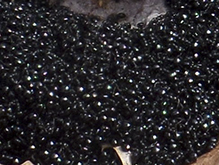 |
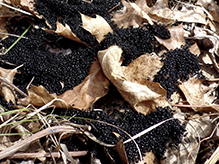 |
|
It literally looked like a black beaded purse laying in the forest. I've seen ant hills before, but nothing ever like this. It was so dense I wasn't sure what it was at first, but then could see a couple of single ants slightly away from the dense mass. |
||
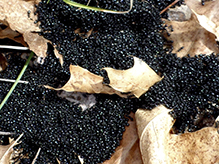 |
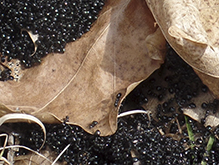 |
|
MinnesotaSeasons.com Photos |
||
|
||
|
||

Slideshows |
|

Visitor Videos |
||
Share your video of this insect. |
||
This button not working for you? |
||
|
Other Videos |
||
Grace shows Dolichoderus taschenbergi 2017 04 26 |
About
Apr 27, 2017 |

Visitor Sightings |
||
Report a sighting of this insect. |
||
This button not working for you? |
||
MinnesotaSeasons.com Sightings |
||
|

Created: 5/17/2020 Last Updated: © MinnesotaSeasons.com. All rights reserved. |
